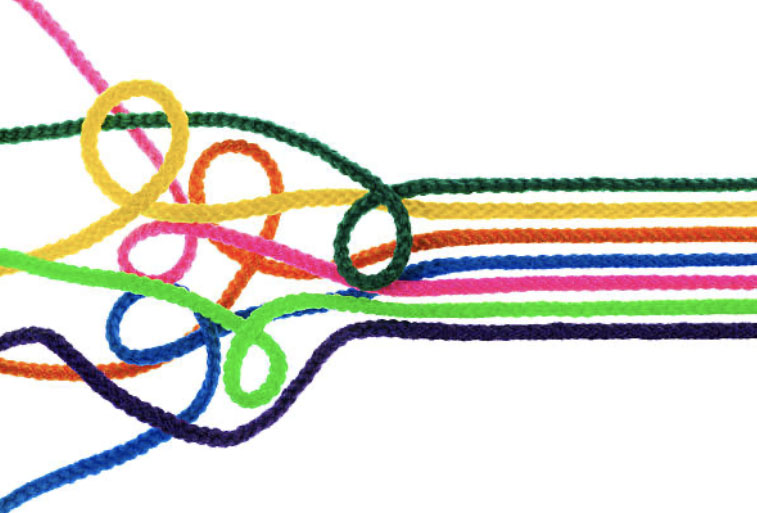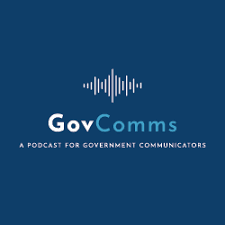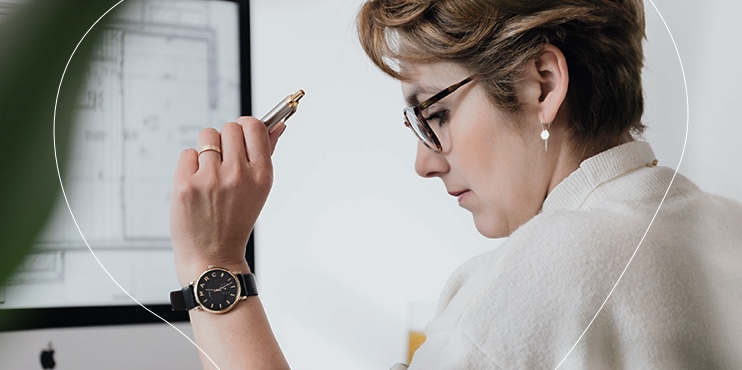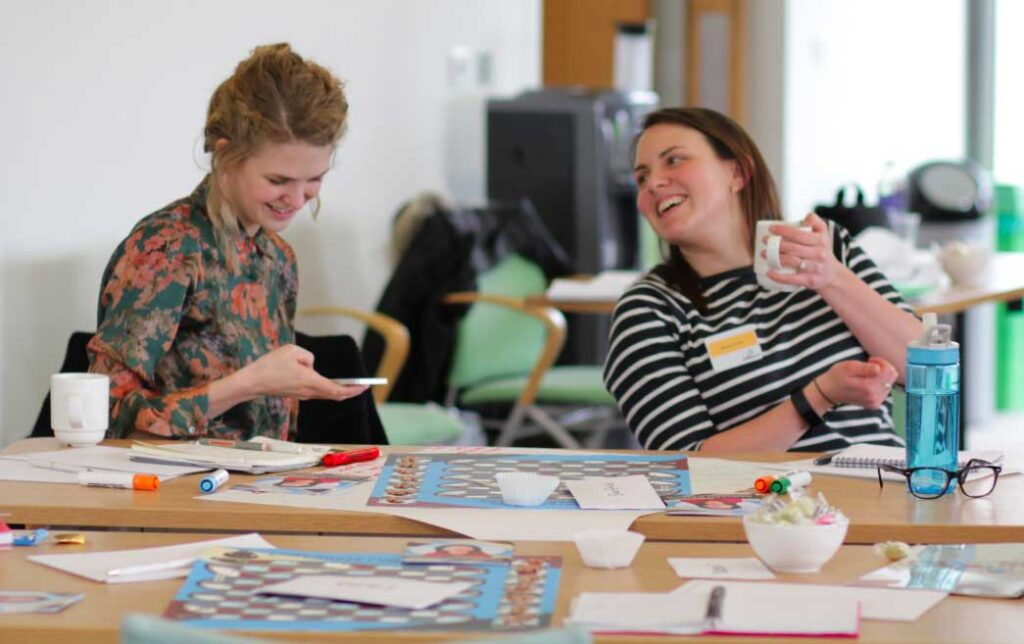This is an excerpt from Women in PR e-reader edited by Ana Adi & Edna Ayme-Yahil, Quadriga University of Applied Sciences Published in April 2020. Original title: Now is the time for reflection. We need change. Unlocking the power of numbers
Photo credit: Ross Findon
Over the past few months, our world has been turned upside down, with many of us sharing common experiences as we adapt to life in a pandemic. The role of communication in business and society is significant to the success of how well we come out of this situation – as businesses, as communities, and as people.
We’ve seen incredible change at a pace that has not been seen before borne from the necessity of the COVID-19 crisis, forcing us to think quickly and creatively to adapt, to work in different ways, and to accept change. We know that what each of us does can have an impact, and we realize how interconnected we are. It has also been a time to reflect and re-assess. What works and what does not? What are we grateful for and what could we create if we have the opportunity and the will?
Like many others, I have had time to reflect and reimagine what I do in my business, but also what we as communication professionals could do as we step into the recovery phase and next normal. Sure, there is an urge to return to pre-COVID-19 normal life, but I wonder if we should? Applying a gender bias lens, let us take a look at what is ‘normal’.
‘Normal’ and numbers
Numbers. What do the numbers 53, 30, 21, 99.5, and 532 represent? The first four relate to bias and are the current reality for women in the workplace. Let me come back to 532.
Did you know that women in the UK are 53% more stressed than men at work? That’s one data set explored in Invisible Women (Criado Perez, 2019), amongst many other gender data inequalities in our organizations and society. In a world where more than half the population are women and women account for 70% of global consumption demand (International Labour Organization, 2016) the data shows that we’re less visible than men. Why? We live in societies and work in organizations that have been designed around men, usually white, able-bodied men. She exposes the biases that exist, be they structural or unconscious. When women are underrepresented in the data then it impacts how decisions are made and the impact of these can range from an inconvenience to being deadly for women. With the proliferation of big data, biased computer algorithms and the rise of AI the problem could get worse. To prevent the self-perpetuation of old biases Criado Perez advocates increase the representation of diverse women in business, politics, and academia. Bolstering the numbers opens the opportunity to identify design flaws and data gaps that male-dominated leaders or teams miss.
You have probably heard of the 30 percent club. This number represents the tipping point of female representation needed at the senior leader and management levels to have a significant impact upon an organization’s bottom line. A global study (Blumberg, 2018) found that with at least 30% women at C-suite a profitable organization had a 15% boost in profitability. It showed that in addition to improved profitability Fortune 500 companies with gender-diverse senior leadership teams were also more innovative and respected. Another study (International Labour Organization, 2019) expanded these findings to show that gender-balanced leadership teams (40–60% of either gender) also found it easier to attract and retain talent, had more open ways of working, and found it easier to gauge customer sentiment. Male dominant or all-male boards are less likely to achieve gender equity in middle management or address structural bias, whilst organizations with female board chairs are more likely to have gender balance in middle management.
Over the past decade, there has been a marked effort to increase the number of women in senior leadership and board roles. For example, in Australia, the Australian Institute of Company Directors (AICD) achieved its 30% target for women directors at ASX200 companies at the end of 2019 (AICD, 2020) up from just 8% a decade ago. This is a positive result that has taken a concerted focus from AICD, Chief Executive Women, Women Gender Equity Australia, and the Male Champions of Change. Nevertheless, despite this achievement, there is much more to do with the numbers of women in board and executive roles declining outside the ASX200. Whilst in the public sector, there appears to be a more purposeful focus on gender equity, as well as broader diversity and inclusion, with the implementation of 50/50 gender targets for all senior leadership and board roles in the Victorian state government. Both examples show commitment at the executive level to affect change in organizational leadership and mindset and to alter the discourse about equity and culture in the workplace. The 40:60 ratio for a gender-balanced board or leadership team is switching to 40:40:20, representing female, male, and other – the other reflecting gender fluidity and other diversity.
Despite the efforts to change the inequities in leadership, many organizations are still falling short. The recent McKinsey Women in the Workplace study (Huang et al., 2019) shows that 21% of US companies have women in the C-suite, and only one in 25 is a woman of color.
The inequity is a result of biases (International Labour Organization, 2019) such as:
• the prevalence of old stereotypes, patriarchal cultures, and practices,
• the “glass wall” where women are in less strategic roles that could lead to executive leadership,
• the “broken rung” where women are less likely to be hired and promoted, thus impacting the number of women stepping up the management ladder.
Each year the World Economic Forum publishes the Global Gender Gap Report (World Economic Forum, 2019) which looks at the current position of gender parity in 153 countries and projects trends to map out how long it will take to achieve gender parity. The numbers are not great and show that at the current rate of change the gender gap will take 99.5 years to close. The fix is not all about numbers, but they do play a significant part.
A global survey of 12,000 people found that both sexes felt the world would be “a better place if more women were in positions of power” (Havas Group, 2017).
Increased representation of women in leadership, politics, and business is good for society and is good for people irrespective of gender. But it is not just about progress at the top, but also at entry-levels and middle management. This is where gender bias becomes even more apparent.
Bias and perception barriers
Reflecting over my career in creative, marketing, and communications, I have regularly dealt with gender bias in the workplace. In many cases it was overt and accepted as a normal part of working in a dynamic and pressured agency environment. Dare I say, both men and women were perpetuating the bias, either as protagonists or as bystanders. As I became more confident in my own capability, I confronted overt bias as it happened.
I recall working on an internal communication campaign with a multinational corporate client as the strategic lead. I oversaw a video shoot with the company’s country head to deliver the campaign narrative. As he arrived, he greeted each of us at the shoot, including his senior marketers, my account director, and my production team, with one exception my female design director. I thought this was rather odd, noted it to myself, and worked with him to deliver the narrative to camera. Once he was finished, he expressed how much he liked the narrative, thanked everyone, and shook hands with the men at the shoot. It made me and the design director uncomfortable so, I stopped him to let him know that I was pleased that he liked the narrative and creative work that the two women present developed and shook his hand. Aside from his overt bias, I was particularly disappointed by the bystander apathy of my male colleagues and clients. I let them know how we felt and that it was imperative they act when they see sexism. Calling out poor behaviour and sharing these stories are steps to changing the norms (Ferguson & Fox, 2018).
For decades, we have focused on improving bias by introducing numerous diversity initiatives and opportunities for women to advance in organizations. Diversity programs have become part of the problem by increasing resistance to reducing bias and patronizing women. We’ve been telling women to change and to fit with expected gender norms to advance and succeed (Ferguson & Fox, 2018).
The numbers show this approach is not working. Fixing women is not the answer. Criado Perez demonstrated that our world has not been designed with women in mind. The problem is neither women nor men but workplaces. This realization has been made and substantiated over and over (Ferguson & Fox, 2018; Morley, 2020; King, The Fix, 2020). Michelle King’s work in this space has been particularly illuminating revealing that many organizations carry the notion of the ideal employee, the “Don Draper success prototype”. Living up to this notion means that we’re expected to engage in stereotypical masculine behaviors and we’re free to commit all our time and energy to the workplace. A notion that is clearly challenged in the current pandemic environment for many of us which is a good thing.
The barriers can be visible and invisible, conscious and unconscious, structural and cultural. Becoming aware of the barriers, in particular, biases is the first step to appreciating the challenges for men and women, and what employees and leaders can do so that workplaces work for everyone. In her book The Fix, King (King, The Fix, 2020) shares the story of a woman in a multinational corporation who did everything right to be promoted to a leadership role, and year after year she failed. Eventually, she got the job when the male decision-maker thought her promotion would make their diversity numbers look good. It reflected his bias and privilege at work.
King makes the point that both men and women in dominant positions have privilege. Men, often, “choose to enable women to have a seat at the table” and “how much legitimacy that role will have”. There is a tendency to view women’s experiences with a unified lens, but they are not – just think race, age, religion, culture, ability, sexual orientation, and it can differ. As men and women, she recommends that we commit to “spending our privilege” as a daily practice. She gives the example of a former LinkedIn leader who engaged employees in discussions to identify where and how they experienced the organization’s culture differently. How did men and women interact in meetings? Were women given a voice or were they interrupted? This encouraged other leaders to follow suit with their teams, and employees shared their stories of marginalization at work. These experiences were then used to create ways to make diversity and inclusion a part of their work-life, as simple actions that everyone could take to proactively demonstrate acts of inclusion (King, The Fix, 2020). Leaders became the champions of change and helped to amplify the messages and work of supporters (Morley, 2020).
Defeating bias
Despite US President Obama being a vocal supporter of women, in his first term men outnumbered women in senior roles in his administration. These women realized they had fewer opportunities than their male colleagues to contribute in meetings. So, the women decided to proactively support each other’s ideas in meetings by repeating them and crediting the woman whose idea it was. They amplified their voice and ensured they were heard. It was a strategic move to use their numbers and lift each other up. In the second term, the gender split in the senior team was more equitable and women were regularly asked for input (Ferguson & Fox, 2018). This amplification effect is now commonly used by both men and women to address gender bias against women in meetings.
Balancing the best of both genders, by both genders, leads to a more inclusive culture. Removing gender attributions from behaviour qualities shows how leadership and culture can be inclusive to drive the benefits of diversity in an organization (Morley, 2020). There has been extensive research on masculine and feminine-related traits in leadership (Appelbaum et al., 2013) and debate over which style is more effective (Lewis, 2020; Henley & Ainge Roy, 2020). The success of the national women leaders in New Zealand, Germany, Taiwan, Iceland, and Norway in their response to COVID-19 has given rise to various articles proclaiming women are better leaders in a crisis (King, CNN Business, 2020). The traits amongst these women leaders are a combination of both masculine and feminine traits, and it could be argued that they are a success due to their leadership rather than attributing it to their gender.
As has been shown in organizations where the CEO is a Male Champion of Change (Male Champions of Change, 2019) compelling, inclusive behaviors and measurable diversity and inclusion initiatives need to be aligned with corporate strategy and purpose. They share their stories of compassion, learning, and vulnerability to highlight what people are doing and achieving, and that they value difference. They share these within their organizations and externally. It becomes part of what they do, the brand, and their DNA (Morley, 2020).
Outside of the organization, how are brands performing to address bias? A recent Kantar report showed that an average of 82% of marketers believed they created “gender-balanced content” and avoided stereotypes, yet 74% of consumers felt the way they were portrayed was “completely out of touch” (Fridlund, 2019). This is a huge discrepancy and an opportunity to rethink our approach to brand communications and marketing.
There are examples of brands that have made an impact such as P&G’s “Always #LikeAGirl” project, or Nike’s “Dream Further” campaign for the Women’s Football World Cup. Diageo, one of the world’s largest producers of alcohol beverages, recognized it was missing an opportunity by focusing on men in their brand communications. This was despite 80% of purchasing decisions were made by women. They researched the status quo to inform what needed to change and then developed a gender portrayal framework to guide consumer-facing communication and advertising. Diageo acknowledged that we all have some level of unconscious bias and that affects our response to communication and advertising. Their framework guides the way they tell real and diverse stories. They conducted workshops with internal teams, all spokespeople, and their agency partners. The company also rolled out HR policies that reflect the framework and ensure a unified set of brand communications committed to positive gender portrayal. The change in their approach resulted in a 70% uplift in return on investment (Chan, 2019).
Where do we go next?
At the beginning of 2017, Dr. Kirstin Ferguson became an accidental activist when she had a bold idea whilst walking along an Australian beach. She did not realize it would be the year of one of the more significant women’s rights movements for decades. Women were (and still are) regularly the targets of trolls who denigrated them on social media. Kirsten felt she could no longer be a bystander and had a simple idea to focus on the positive stories of women. That day she wrote four basic questions (How would you describe what it is you do, without using a position title; What did you hope to do when you were at school; How would you describe your life to date in three words; Who do you hope to inspire and why), rang her mum and asked her to answer the questions and send some personal photos. Kirsten posted the answers and photos on Twitter and Facebook. She called on women – any women – to answer the four questions about their life and send her four photos. It was the beginning of the #CelebratingWomen campaign that attracted thousands of followers and a diverse community of women eager to share their stories and support each other. These were women from all walks of life, some celebrities, some politicians, and everyday women. All had a positive story to tell. It showed how women’s networks succeed through the amplifier effect with 757 women from 37 countries participating over the year. The campaign attracted the attention of Twitter’s Jack Dorsey, received numerous awards, and has spurned many women and men to challenge the status quo and drive change (Ferguson & Fox, 2018).




I am proud to share my #CelebratingWomen number – #532 (Ferguson & Fox, 2018).
Stepping forward to March 2021, the numbers have barely moved. I attended the AICD’s Australian Governance Summit and whilst 32% of ASX directors are now female, it’s so disappointing that more than 90% of directors are Anglo-Celtic. During 2020 we’ve seen our institutions move at speed and have achieved change in weeks and months that we would not have thought possible in years. Yet the latest 2020 Global Gender Gap Report has not moved from 99.5.
Enough is enough. It’s time to change quickly. We can do it.
References:
AICD. (2020, February 19). We have reached a milestone for female directors. Retrieved from Company Directors: https://aicd.companydirectors.com.au/advocacy/board-diversity/we-have-reached-a-milestone-for-female-directors
Applebaum, S. H., Shapiro, B. T., Didus, K., Luongo, T., & Paz, B. (2013). Upward mobility for women managers: styles and perceptions part 1. Industrial and Commercial Training, 45(1), 51-59. Blumberg, Y. (2018, March 2). Companies with more female executives make more money – here’s why. Retrieved from cnbc.com: https://www. cnbc.com/2018/03/02/why-companies-with-female-managers-make-more-money.html
Chan, J. (2019, June). Link Influence. Retrieved, from https://www.linkfluence. com/blog/positive-gender-portrayal-advertising
Criado Perez, C. (2019). Invisible Women: Exposing Data Bias in a World Designed for Men. London: Penguin Random House UK.
Ferguson, D., & Fox, C. (2018). Women Kind: Unlocking the power of women supporting women. Crows Nest: Murdoch Books.
Fridlund, A. (2019, March 7). Marketing Magazine. Retrieved April 8, 2020, from https://www.marketingmag.com.au/hubs-c/opinion-fridlund-iwd-gender/ Havas Group. (2017). Prosumer Reports: The Future is FeMale. Havas Global Communications.
Henley, J., & Ainge Roy, E. (2020, April 25). The Guardian. Retrieved from https://www.theguardian.com/world/2020/apr/25/why-do-female-leaders-seem-to-be-more-successful-at-managing-the-coronavirus-crisis
Huang, J., Krivkovich, A., Starikova, I., Yee, L., & Zanoschi, D. (2019). Women in the Workplace 2019. McKinsey.
International Labour Organization. (2016). Women on Boards: Building the female talent pipeline. Retrieved from ilo.org/ged: https://www.ilo.org/wcmsp5/groups/public/—dgreports/—gender/documents/briefingnote/wcms_410200.pdf
International Labour Organization. (2016). Women on Boards: Building the Female Talent Pipeline. Retrieved from www.ilo.org/ged: https://www.ilo.org/wcmsp5/groups/public/—dgreports/—gender/documents/briefingnote/wcms_410200.pdf
International Labour Organization. (2019). Women in Business and Management: the business case for change. Geneva: ILO.
International Labour Organization. (2019, May 22). Women in leadership bring better business performance. Retrieved from
International Labour Organization: https://www.ilo.org/global/about-the-ilo/newsroom/news/WCMS_701767/lang–en/index.htm
King, M. P. (2020, May 5). CNN Business. Retrieved from https://edition.cnn. com/2020/05/05/perspectives/women-leaders-coronavirus/index.html
King, M. P. (2020). The Fix: How to overcome the invisible barriers that are holding women back at work. London: Simon & Schuster.
Lewis, H. (2020, May 6). The Atlantic. Retrieved from https://www.theatlantic.com/international/archive/2020/05/new-zealand-germany-women-leadership-strongmen-coronavirus/611161/
Male Champions of Change. (2019). Male Champions of Change. Retrieved April 25, 2020, from https://malechampionsofchange.com/male-champions-of-change-release-the-2019-combined-impact-report/
Morley, K. (2020). Beat Gender Bias. Melbourne: Major Street Publishing.
World Economic Forum. (2019, December 16). Mind the 100 Year Gap. Retrieved from World Economic Forum: https://www.weforum.org/reports/gender-gap-2020-report-100-years-pay-equality









